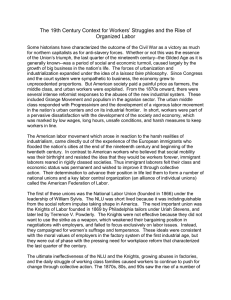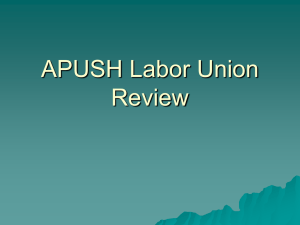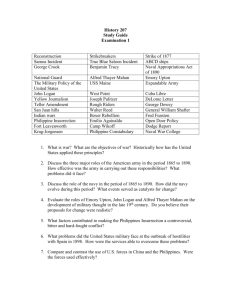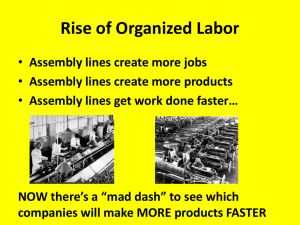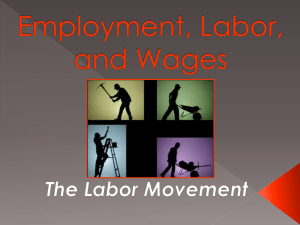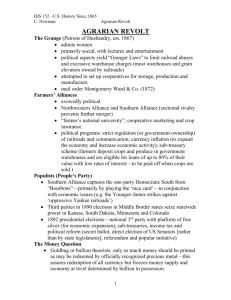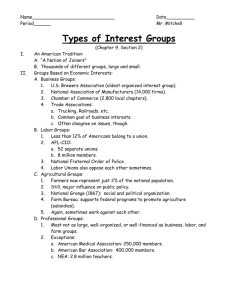Study Guide - The Cities, Immigration, Unions, Public Education
advertisement
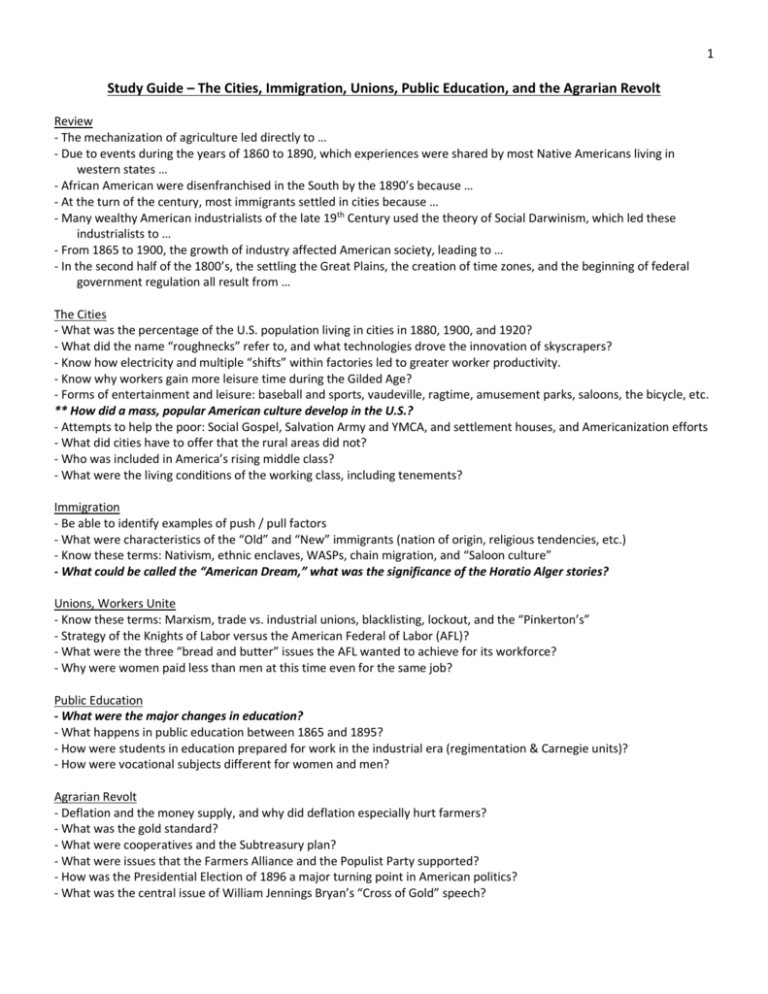
1 Study Guide – The Cities, Immigration, Unions, Public Education, and the Agrarian Revolt Review - The mechanization of agriculture led directly to … - Due to events during the years of 1860 to 1890, which experiences were shared by most Native Americans living in western states … - African American were disenfranchised in the South by the 1890’s because … - At the turn of the century, most immigrants settled in cities because … - Many wealthy American industrialists of the late 19th Century used the theory of Social Darwinism, which led these industrialists to … - From 1865 to 1900, the growth of industry affected American society, leading to … - In the second half of the 1800’s, the settling the Great Plains, the creation of time zones, and the beginning of federal government regulation all result from … The Cities - What was the percentage of the U.S. population living in cities in 1880, 1900, and 1920? - What did the name “roughnecks” refer to, and what technologies drove the innovation of skyscrapers? - Know how electricity and multiple “shifts” within factories led to greater worker productivity. - Know why workers gain more leisure time during the Gilded Age? - Forms of entertainment and leisure: baseball and sports, vaudeville, ragtime, amusement parks, saloons, the bicycle, etc. ** How did a mass, popular American culture develop in the U.S.? - Attempts to help the poor: Social Gospel, Salvation Army and YMCA, and settlement houses, and Americanization efforts - What did cities have to offer that the rural areas did not? - Who was included in America’s rising middle class? - What were the living conditions of the working class, including tenements? Immigration - Be able to identify examples of push / pull factors - What were characteristics of the “Old” and “New” immigrants (nation of origin, religious tendencies, etc.) - Know these terms: Nativism, ethnic enclaves, WASPs, chain migration, and “Saloon culture” - What could be called the “American Dream,” what was the significance of the Horatio Alger stories? Unions, Workers Unite - Know these terms: Marxism, trade vs. industrial unions, blacklisting, lockout, and the “Pinkerton’s” - Strategy of the Knights of Labor versus the American Federal of Labor (AFL)? - What were the three “bread and butter” issues the AFL wanted to achieve for its workforce? - Why were women paid less than men at this time even for the same job? Public Education - What were the major changes in education? - What happens in public education between 1865 and 1895? - How were students in education prepared for work in the industrial era (regimentation & Carnegie units)? - How were vocational subjects different for women and men? Agrarian Revolt - Deflation and the money supply, and why did deflation especially hurt farmers? - What was the gold standard? - What were cooperatives and the Subtreasury plan? - What were issues that the Farmers Alliance and the Populist Party supported? - How was the Presidential Election of 1896 a major turning point in American politics? - What was the central issue of William Jennings Bryan’s “Cross of Gold” speech?

